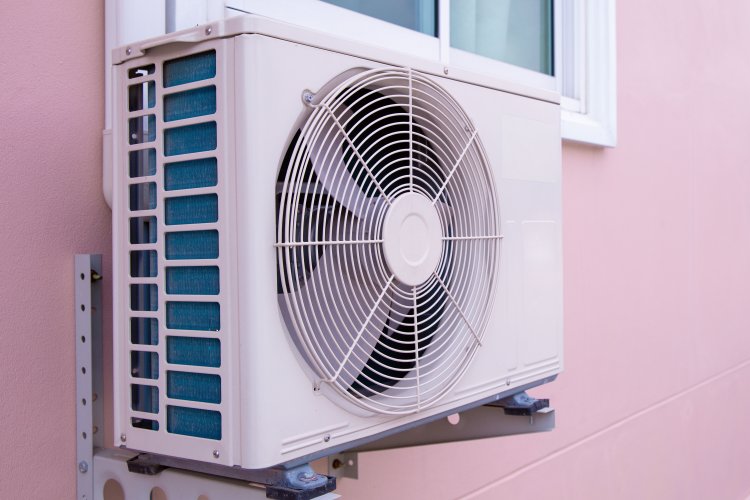
Building on the first part of this blog series, we’ll discuss the essential roles that stakeholders—program administrators, contractors, community agencies and government bodies—should play in helping underserved households secure the most suitable and cost-effective heat pump system. We will cover strategies that should be considered to mitigate upfront costs and help customers avoid negative utility bill impacts when installing a heat pump.
Determining the Ideal Heat Pump
Determining the ideal heat pump solution for under-resourced households requires a coordinated effort from customers, contractors, utility program administrators, community agencies and government bodies. These stakeholders must work together to ensure households get effective and affordable heat pump solutions. Energy efficiency program administrators, often the local utility, should provide clear information on financial incentives, like rebates, tax credits and grants. This is often done through effective marketing messages that resonate with specific communities. Relationship-building is also essential, especially in historically-excluded communities. Building trust takes time but through these relationships, community members can help tailor marketing messages and outreach to be more effective and inclusive. Program administrators should also offer guidance on other energy efficiency programs available to customers beyond heat pumps, such as air sealing and insulation upgrades.
Contractors are also an important part of this process, as they are the experts guiding customers towards a purchase. Customers should be connected with certified contractors who can evaluate existing systems and recommend the best and most cost-effective heat pump options. Certified contractors should have experience with installing different heat pump systems and help customers understand the upfront costs, potential bill impacts and available incentives when discussing heat pump options. Utilities, community organizations and government agencies should contribute to this process by providing educational resources, streamlining access to incentives and supporting policies that make transitions smoother. By fostering strong relationships and tailoring outreach, these stakeholders can help historically excluded customers navigate the complexities of heat pump installations, achieving both affordability and efficiency through collaboration.
Managing Heat Pump Installation Costs and Mitigating Potential Utility Bill Impacts
Heat pumps offer significant advantages for energy efficiency, but they can sometimes lead to higher utility bills, especially in colder regions with high electricity costs or in homes that are not as energy efficient, like many homes in under-resourced communities. Upfront installation costs, potential utility bill impacts and resources available to help reduce their expenses should all be communicated to the household by contractors or organizations assisting them in selecting a new heating and cooling system. Below are approaches to consider:
Upfront Cost Management
The high initial cost of heat pump systems can be a major barrier. Fortunately, there are several ways to make upfront investment more affordable:
- Financial Incentives: Government rebates, tax credits and grants, as well as utility-sponsored incentives and private-sector funding can help reduce upfront costs. Programs like the Department of Energy's Home Energy Rebates specifically target low-income households to make heat pump systems more accessible.
- Utility Bill Financing: Some utilities offer on-bill financing or leasing options that allow customers to pay for the heat pump system over time through their monthly utility bills.
- Community Partnerships: Local governments, nonprofits and community organizations may partner to provide discounted heat pump installations or access to low-interest loans.
Mitigating Potential Utility Bill Impacts
The potential increase in utility bills associated with heat pump systems is a concern for under-resourced households. Several strategies can be implemented to address this issue and help manage these potential impacts:
- Weatherization & Insulation: Upgrading a home's insulation and addressing weatherization issues before installing a heat pump can significantly reduce heating and cooling loads. This leads to lower utility bills and more consistent indoor temperatures.
- Hybrid Options: Hybrid systems that combine a heat pump with a secondary heating source like a natural gas furnace offer flexibility in managing energy costs based on current prices and outdoor temperatures.
- Proper Installation & Maintenance: Ensuring correct sizing, installation and regular maintenance of the heat pump system prevents overwork, improves efficiency and extends the system's lifespan, contributing to better long-term savings.
- Utility Rate Assistance: Many utilities offer special discounted rates or bill credits for income-eligible customers or those with heat pump systems, helping to offset the ongoing energy costs.
Addressing both the upfront installation costs and potential for higher utility bills will help create a future where the advantages of heat pump technology are accessible and affordable for all, regardless of economic background.
Conclusion
Heat pumps are a game-changer for energy-efficient heating and cooling, promising lower energy use and reduced emissions. As the country embraces this technology, it’s important to ensure that all communities, especially those that have been historically excluded, can access and afford these systems. Collaboration among all stakeholders is essential to a more equitable and inclusive transition where everyone benefits from improved comfort, lower utility costs and a healthier environment.